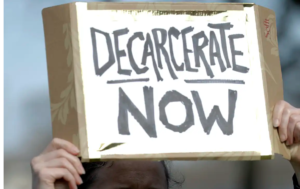The crisis is now

Isn’t it “under control?” Are we all just thrilled that our states and counties and cities are “opening up?” Are we looking forward to those summer parties? Making those summer travel plans? Because, you know: Flattening. The worse is behind us. Or, as the informed and deeply thoughtful members of the First Family tell us, the virus is about to “magically” disappear.
Regardless of what is happening in your community, in your state—and I hope the news is as good as it can be—please know this: Cases of the coronavirus in prisons and jails across the United States have soared in recent weeks. The number of prison inmates known to be infected has doubled during the past month. The Marshall Project reports that 46,967 prisoners have so far tested positive. Prison deaths tied to the coronavirus are up by 73 percent since mid-May.
Now, according to the national database maintained by the New York Times, the five largest known clusters of the virus in the United States are not at nursing homes or meatpacking plants, but inside correction institutions.
Of course they are.
We have heard for months that prisons and jails would be hot spots, that they are extreme high-risk environments.
They are often overcrowded, unsanitary places where social distancing is impractical, bathrooms and day rooms are shared by hundreds of inmates, and access to cleaning supplies is tightly controlled. Add to this that we have an aging (and chronically ill) prison population with limited access to health care. Oregon, my state, has one of the oldest incarcerated populations in the nation. Once behind bars, prisoners age faster than the rest of us. Health researchers estimate from 10 to 15 years faster.
The response from governors, from Departments of Corrections and from officials within prisons themselves has been inconsistent, muddled, mostly ineffective. A few states have moved forward with robust testing. Most states have not. Some states are releasing medically vulnerable prisoners; others are not. Many are stalling, arguing politics. This is not about politics. This is about health. Men and women are dying.
The crisis is now. The response must be now: testing for all; release not just for the medically vulnerable and aged but for all low-risk inmates who have served at least half of their sentences.






1 comment
I totally agree
Leave a Comment